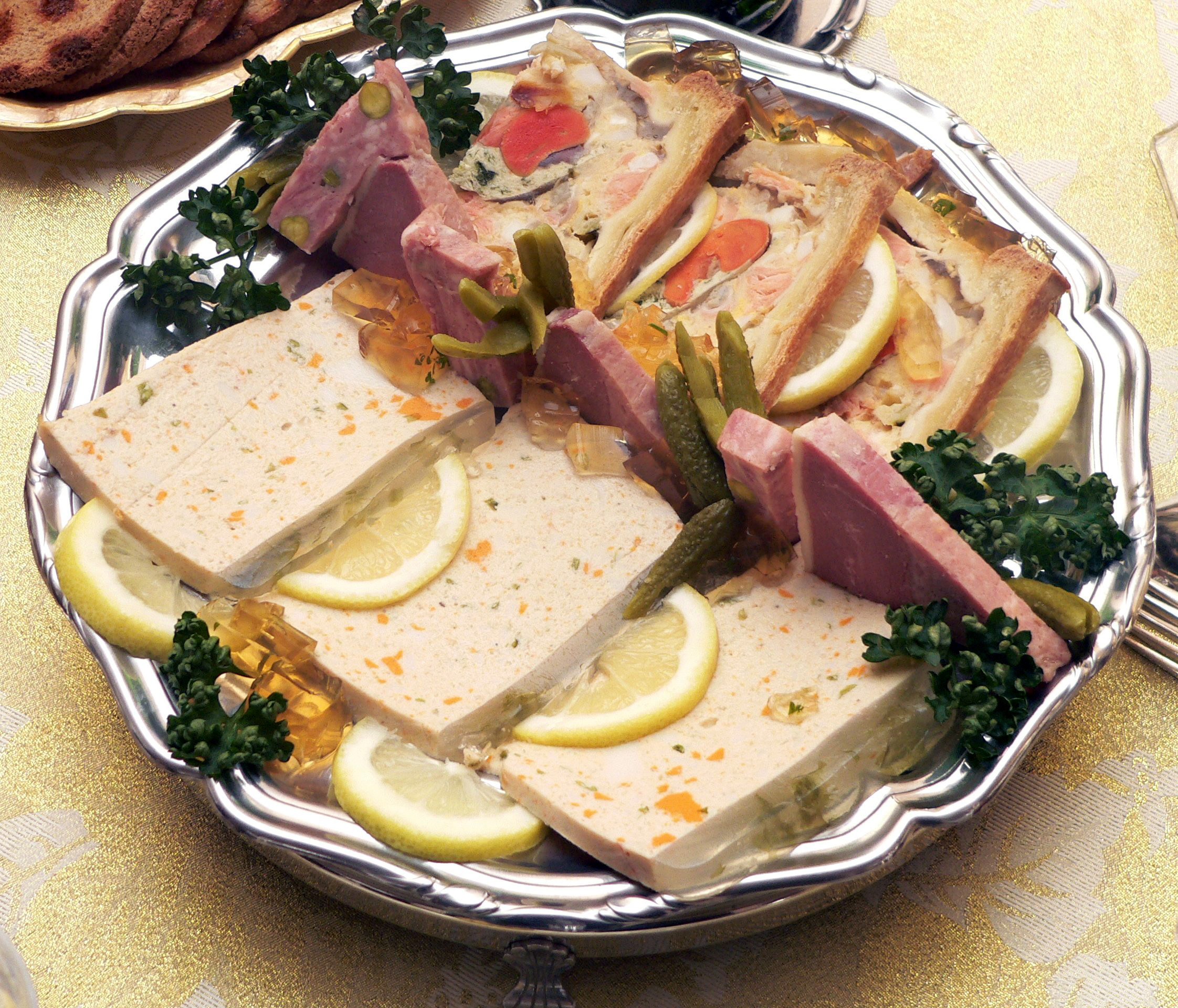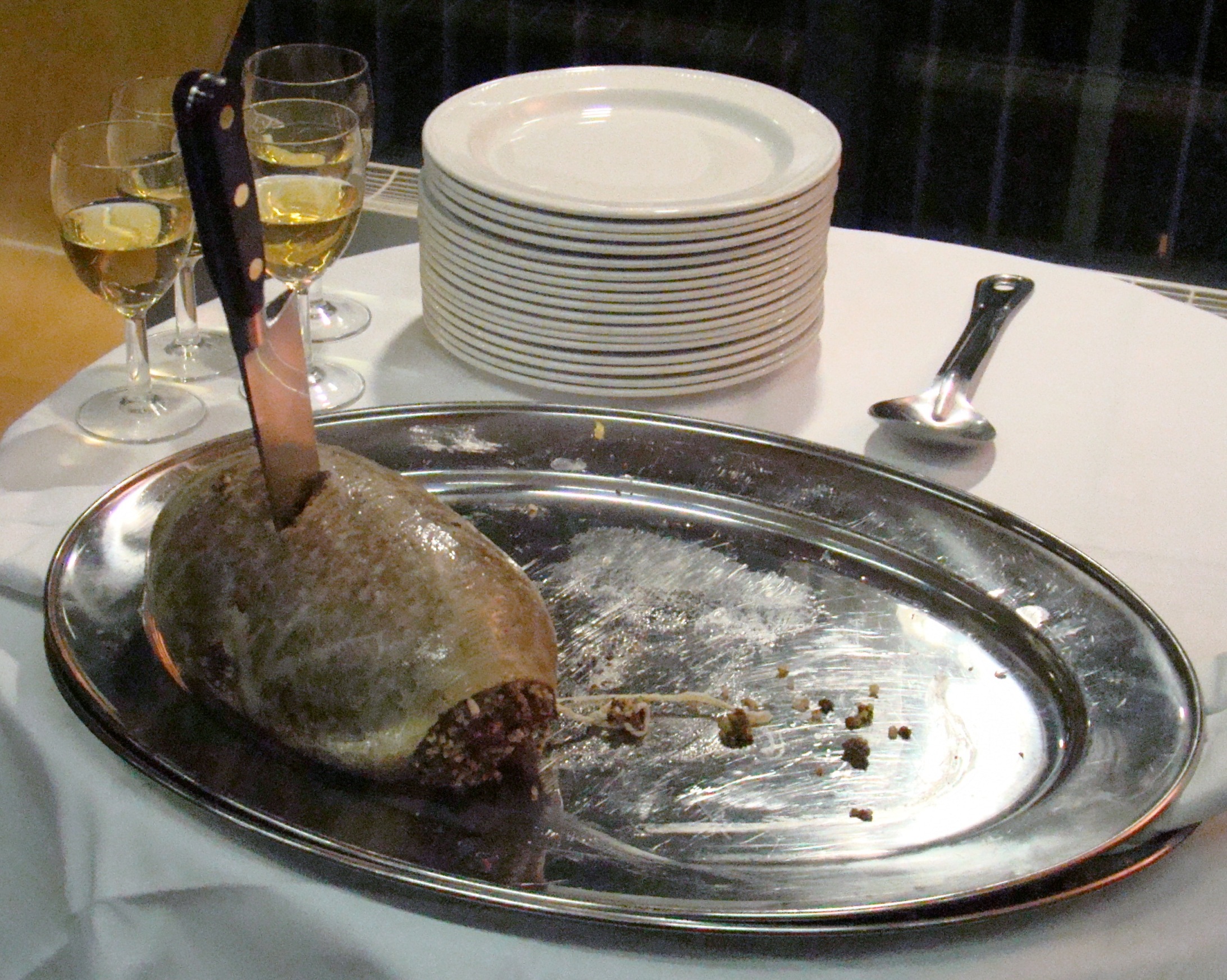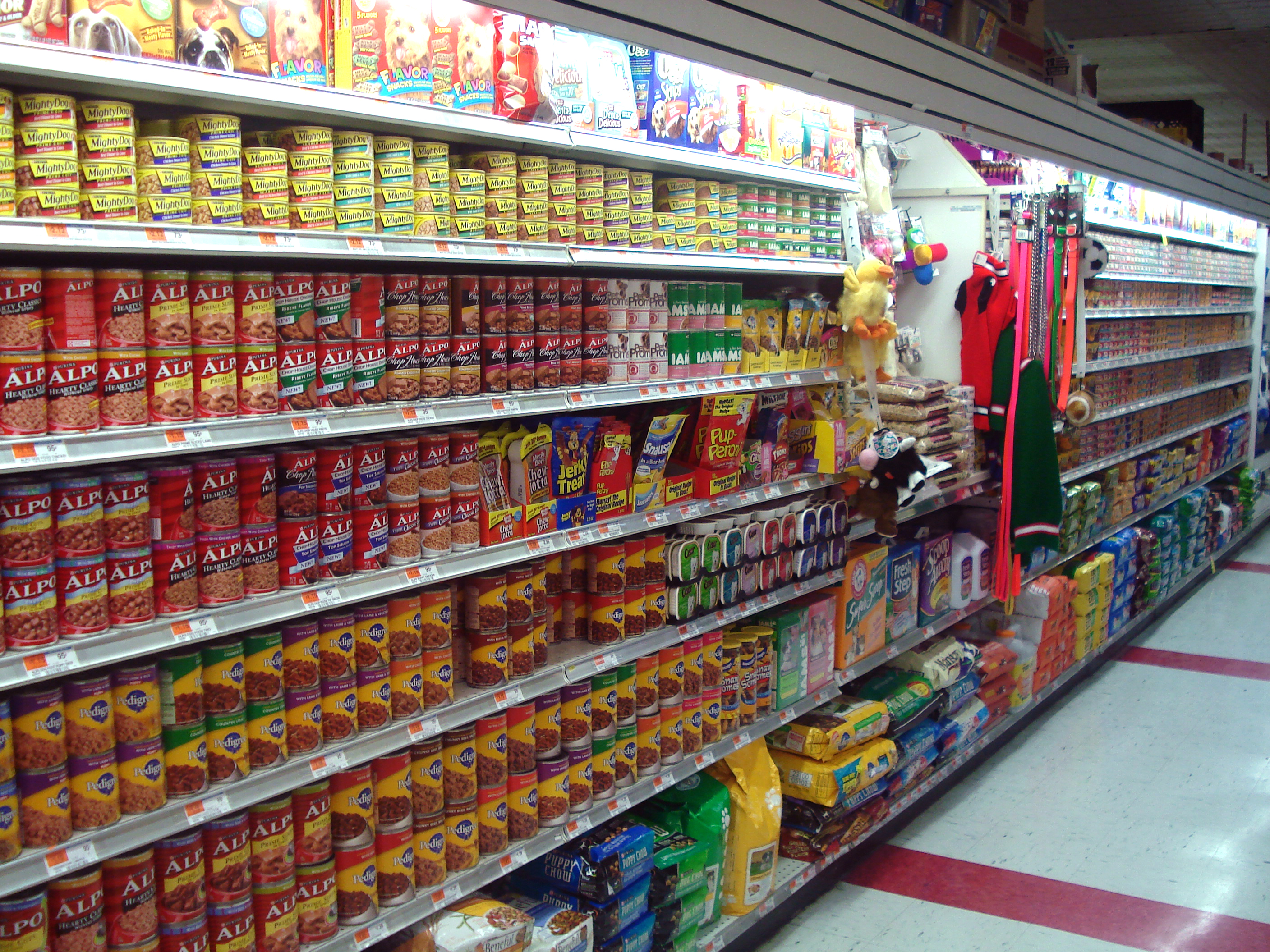|
Offal
Offal (), also called variety meats, pluck or organ meats, is the internal organ (anatomy), organs of a butchered animal. Offal may also refer to the by-products of Milling (grinding), milled grains, such as corn or wheat. Some cultures strongly consider offal consumption to be taboo, while others use it as part of their everyday food, such as lunch meats, or, in many instances, as Delicacy, delicacies. Certain offal dishes—including ''foie gras'' and ''pâté''—are often regarded as gourmet food in the culinary arts. Others remain part of traditional regional cuisine and are consumed especially during holidays; some examples are sweetbread, Jewish chopped liver, Scottish haggis, U.S. chitterlings, and Mexican Menudo (soup), menudo. On the other hand, intestines are traditionally used as casing for sausages. Depending on the context, ''offal'' may refer only to those parts of an animal carcass discarded after butchering or skinning; offal not used directly for human or anim ... [...More Info...] [...Related Items...] OR: [Wikipedia] [Google] [Baidu] |
Haggis
Haggis ( ) is a savoury pudding containing sheep's offal, pluck (heart, liver, and lungs), Mincing, minced with chopped onion, oatmeal, suet, spices, and salt, mixed with Stock (food), stock, and cooked while traditionally encased in the animal's stomach though now an artificial sausage casing, casing is often used instead. According to the 2001 English edition of the ''Larousse Gastronomique'': "Although its description is not immediately appealing, haggis has an excellent nutty texture and delicious savoury flavour". It is believed that food similar to haggis — perishable offal quickly cooked inside an animal's stomach, all conveniently available after a hunt — was eaten from ancient times. Although the name "hagws" or "hagese" was first recorded in England c. 1430, the dish is considered traditionally of Scottish origin. It is even the national dish as a result of Scots poet Robert Burns' poem "Address to a Haggis" of 1786. Haggis is traditionally served with "rutabaga, ... [...More Info...] [...Related Items...] OR: [Wikipedia] [Google] [Baidu] |
Sweetbread
Sweetbread is a culinary name for the thymus or pancreas, typically from calf or lamb. Sweetbreads have a rich, slightly gamey flavor and a tender, succulent texture. They are often served as an appetizer or a main course and can be accompanied by a variety of sauces and side dishes. The etymology of the name is unclear. Description Sweetbread is a culinary name for the thymus (also called throat, gullet, or neck sweetbread) or pancreas (also called stomach, belly or heart sweetbread), typically from calf () or lamb (). Sweetbreads have a rich, slightly gamey flavor and a tender, succulent texture. The "heart" sweetbreads are more spherical, while the "throat" sweetbreads are more cylindrical. As the thymus is replaced by fibrous tissue in older animals, only pancreatic sweetbreads come from beef and pork. Like other edible non-muscle from animal carcasses, sweetbreads may be categorized as offal, "fancy meat", or "variety meat". Various other glands used as food may als ... [...More Info...] [...Related Items...] OR: [Wikipedia] [Google] [Baidu] |
Pork
Pork is the culinary name for the meat of the pig (''Sus domesticus''). It is the most commonly consumed meat worldwide, with evidence of pig animal husbandry, husbandry dating back to 8000–9000 BCE. Pork is eaten both freshly cooked and preserved; Curing (food preservation), curing extends the shelf life of pork products. Ham, Gammon (meat), gammon, bacon, and sausage, pork sausage are examples of preserved pork. Charcuterie is the branch of cooking devoted to prepared meat products, many from pork. Pork is the most popular meat in the Western world, particularly in Central Europe. It is also very popular in East Asia, East and Southeast Asia (Mainland Southeast Asia, Philippines, Singapore, and East Timor). The meat is highly prized in Asian cuisines, especially in China (including Hong Kong) and Northeast India, for its fat content and texture. Some religions and cultures Religious restrictions on the consumption of pork, prohibit pork consumption, notably Islami ... [...More Info...] [...Related Items...] OR: [Wikipedia] [Google] [Baidu] |
Chitterlings
Chitterlings ( ), sometimes spelled chitlins or chittlins, are a food most commonly made from the small intestines of pigs, though cow, lamb, goose and goat may also be used. They may be filled with a forcemeat to make sausage.''Oxford English Dictionary'', 1st edition, updated March 2021''s.v.''/ref> Etymology and early usage ''Chitterling'' is first documented in Middle English in the form , . Various other spellings and dialect forms were used. The primary form and derivation are uncertain. A 1743 English cookery book ''The Lady's Companion: or, An Infallible Guide to the Fair Sex'' contained a recipe for "Calf's Chitterlings" which was essentially a bacon and offal sausage in a calf's intestine casing. The recipe explained the use of calves', rather than the more usual pigs', intestines with the comment that " hesesort of... puddings must be made in summer, when hogs are seldom killed". This recipe was repeated by the English cookery writer Hannah Glasse in her 1784 coo ... [...More Info...] [...Related Items...] OR: [Wikipedia] [Google] [Baidu] |
Beef
Beef is the culinary name for meat from cattle (''Bos taurus''). Beef can be prepared in various ways; Cut of beef, cuts are often used for steak, which can be cooked to varying degrees of doneness, while trimmings are often Ground beef, ground or minced, as found in most hamburgers. Beef contains protein, iron, and vitamin B12. Along with other kinds of red meat, high consumption is associated with an increased risk of colorectal cancer and coronary heart disease, especially when processed meat, processed. Beef has a high Environmental impact of meat production, environmental impact, being a primary driver of deforestation with the highest greenhouse gas emissions of any agricultural product. In prehistoric times, humans hunted aurochs and later domesticated them. Since that time, numerous beef cattle, breeds of cattle have been Selective breeding, bred specifically for the quality or quantity of their meat. Today, beef is the third most widely consumed meat in the world, aft ... [...More Info...] [...Related Items...] OR: [Wikipedia] [Google] [Baidu] |
Rendering (industrial)
Rendering is a process that converts waste animal tissue into stable, usable materials. Rendering can refer to any processing of animal products into more useful materials, or, more narrowly, to the rendering of whole animal fatty tissue into purified fats like lard or tallow. Rendering can be carried out on an industrial, farm, or kitchen scale. It can also be applied to non-animal products that are rendered down to pulp. The rendering process simultaneously dries the material and separates the fat from the bone and protein, yielding a fat commodity and a protein meal. Input sources In animal products, the majority of tissue processed comes from slaughterhouses, but also includes restaurant grease, butcher shop trimmings, and expired meat from grocery stores. This material can include the fatty tissue, bones, and offal, as well as entire carcasses of animals condemned at slaughterhouses and those that have died on farms, in transit, etc. The most common animal sources are bee ... [...More Info...] [...Related Items...] OR: [Wikipedia] [Google] [Baidu] |
Menudo (soup)
Menudo, also known as Mondongo, pancita ('' ittlegut'' or '' ittlestomach'') or mole de panza ("stomach sauce"), is a traditional Mexican soup, made with cow's stomach (tripe) in broth with a red chili pepper base. It is the Mexican variation of the Spanish callos or ''menudo''. Similar dishes exist throughout Latin America and Europe including mondongo, guatitas, dobrada; trippa alla romana in Italy, or patsas - πατσάς in Greece. Hominy (in Northern Mexico), lime, onions, and oregano are used to season the broth. It differs from the Filipino dish of the same name, in that the latter does not use tripe, hominy, or a chili sauce. History Tripe soups of both beef and mutton have been traditional in Spanish cuisine since at least the 14th century. Don Enrique de Villena refers to them disparagingly in his 1423 , saying: The first part of the novel '' Guzmán de Alfarache'' (1599) mentions the protagonist eating beef tripe callos. With the Spanish colonization o ... [...More Info...] [...Related Items...] OR: [Wikipedia] [Google] [Baidu] |
Agglutination
In linguistics, agglutination is a morphology (linguistics), morphological process in which words are formed by stringing together morphemes (word parts), each of which corresponds to a single Syntax, syntactic feature. Languages that use agglutination widely are called agglutinative languages. For example, in the agglutinative Turkish language, Turkish, the word ("from your houses") consists of the morphemes ''ev-ler-i-n-iz-den''. Agglutinative languages are often contrasted with isolating languages, in which words are monomorphemic, and fusional languages, in which words can be complex, but morphemes may correspond to multiple features. Examples of agglutinative languages Although agglutination is characteristic of certain language families, this does not mean that when several languages in a certain geographic area are all agglutinative they are necessarily related phylogenetically. In the past, this assumption led linguists to propose the so-called Ural–Altaic languages, ... [...More Info...] [...Related Items...] OR: [Wikipedia] [Google] [Baidu] |
Afrikaans
Afrikaans is a West Germanic languages, West Germanic language spoken in South Africa, Namibia and to a lesser extent Botswana, Zambia, Zimbabwe and also Argentina where there is a group in Sarmiento, Chubut, Sarmiento that speaks the Patagonian Afrikaans, Patagonian dialect. It evolved from the Dutch language, Dutch vernacular of South Holland (Hollandic dialect) spoken by the free Burghers, predominantly Dutch settlers and slavery in South Africa#Dutch rule, enslaved population of the Dutch Cape Colony, where it gradually began to develop distinguishing characteristics in the 17th and 18th centuries. Although Afrikaans has adopted words from other languages including German language, German, Malay language, Malay and Khoisan languages, an estimated 90 to 95% of the vocabulary of Afrikaans is of Dutch origin. Differences between Afrikaans and Dutch often lie in the more analytic language, analytic Morphology (linguistics), morphology and grammar of Afrikaans, and differ ... [...More Info...] [...Related Items...] OR: [Wikipedia] [Google] [Baidu] |
West Frisian Language
West Frisian (; ), or simply Frisian ( ; ), is a West Germanic language spoken mostly in the province of Friesland () in the north of the Netherlands, mostly by those of Frisians, Frisian ancestry. It is the most widely spoken of the Frisian languages. In the study of the evolution of English language, English, West Frisian is notable as being the most closely related foreign tongue to the various dialects of Old English spoken across the Heptarchy, these being part of the Anglo-Frisian languages, Anglo-Frisian branch of the West Germanic family. Name The name "West Frisian" is only used outside the Netherlands, to distinguish this language from the closely related Frisian languages of East Frisian language, East Frisian, including Saterland Frisian language, Saterland Frisian, and North Frisian language, North Frisian spoken in Germany. Within the Netherlands, however, "West Frisian" refers to the West Frisian Dutch, West Frisian dialect of the Dutch language while the We ... [...More Info...] [...Related Items...] OR: [Wikipedia] [Google] [Baidu] |
Pet Food
Pet food is animal feed intended for consumption by pets. Typically sold in pet stores and supermarkets, it is usually specific to the type of animal, such as dog food or cat food. Most meat used for animals is a byproduct of the human food industry, and is not regarded as "human grade".Hickman, LeoBritain's problem with pets ''The Guardian'', November 13, 2009. Examples of foods for pets would be canned foods and dry mix. Pet food production has environmental, Land use, land-use and climate change impacts. In 2019, the world pet food market was valued at US$87.09 billion and is projected to grow to US$113.2 billion by the year 2024. The pet food market is dominated by five major companies, as of 2020: Mars, Incorporated, Mars, Inc., Nestlé Purina PetCare, Nestle Purina Petcare, The J.M. Smucker Company, J. M. Smucker, Hill's Pet Nutrition, Inc. (owned by Colgate-Palmolive), and Blue Buffalo Co. Ltd (owned by General Mills). Industry In the United States, pet-food sales in 201 ... [...More Info...] [...Related Items...] OR: [Wikipedia] [Google] [Baidu] |
Fuel
A fuel is any material that can be made to react with other substances so that it releases energy as thermal energy or to be used for work (physics), work. The concept was originally applied solely to those materials capable of releasing chemical energy but has since also been applied to other sources of heat energy, such as Nuclear power, nuclear energy (via nuclear fission and nuclear fusion). The heat energy released by reactions of fuels can be converted into mechanical energy via a heat engine. Other times, the heat itself is valued for warmth, cooking, or industrial processes, as well as the illumination that accompanies combustion. Fuels are also used in the Cell (biology), cells of organisms in a process known as cellular respiration, where organic molecules are oxidized to release usable energy. Hydrocarbons and related organic molecules are by far the most common source of fuel used by humans, but other substances, including radioactive metals, are also utilized. Fu ... [...More Info...] [...Related Items...] OR: [Wikipedia] [Google] [Baidu] |









